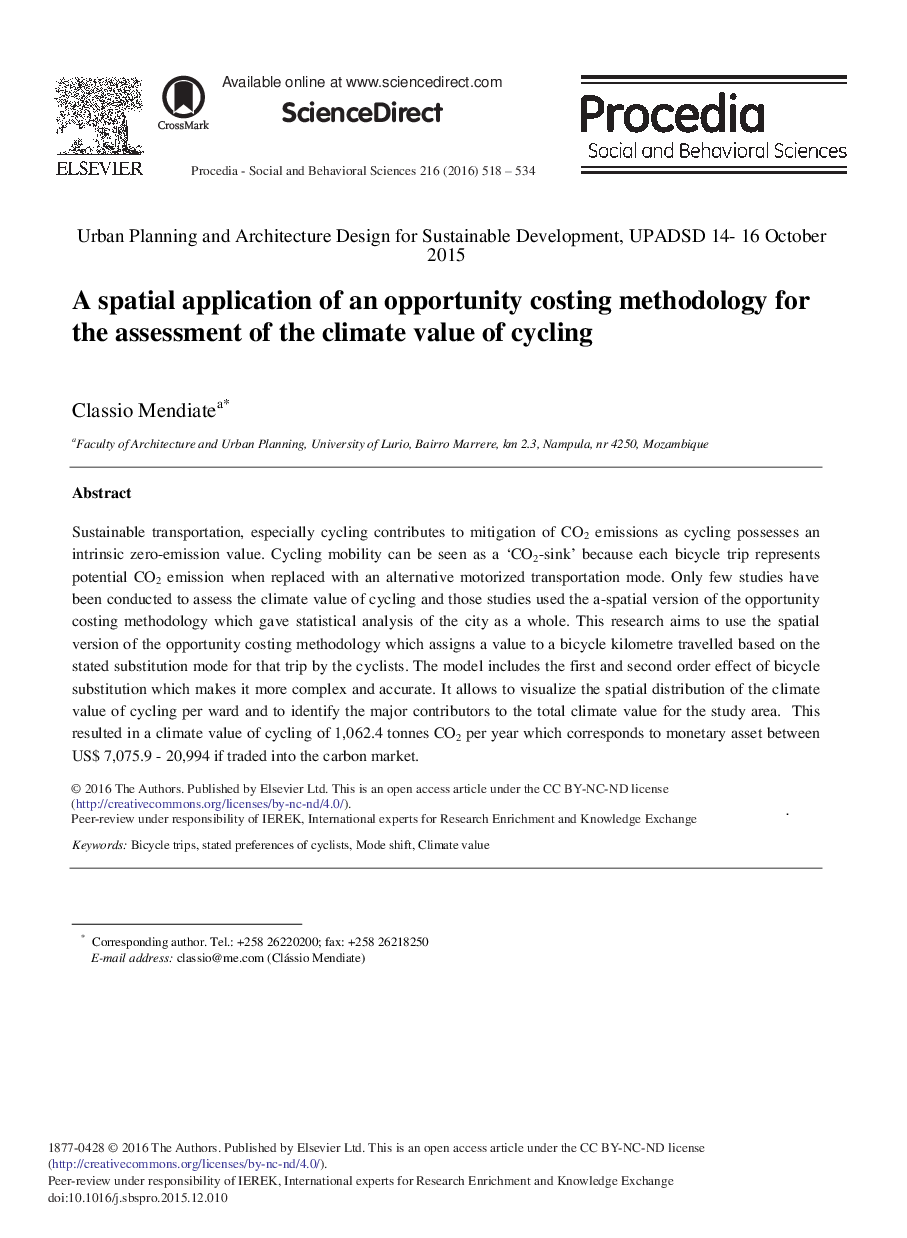| Article ID | Journal | Published Year | Pages | File Type |
|---|---|---|---|---|
| 1108758 | Procedia - Social and Behavioral Sciences | 2016 | 17 Pages |
Sustainable transportation, especially cycling contributes to mitigation of CO2 emissions as cycling possesses an intrinsic zero-emission value. Cycling mobility can be seen as a ‘CO2-sink’ because each bicycle trip represents potential CO2 emission when replaced with an alternative motorized transportation mode. Only few studies have been conducted to assess the climate value of cycling and those studies used the a-spatial version of the opportunity costing methodology which gave statistical analysis of the city as a whole. This research aims to use the spatial version of the opportunity costing methodology which assigns a value to a bicycle kilometre travelled based on the stated substitution mode for that trip by the cyclists. The model includes the first and second order effect of bicycle substitution which makes it more complex and accurate. It allows to visualize the spatial distribution of the climate value of cycling per ward and to identify the major contributors to the total climate value for the study area. This resulted in a climate value of cycling of 1,062.4 tonnes CO2 per year which corresponds to monetary asset between US$ 7,075.9 - 20,994 if traded into the carbon market.
